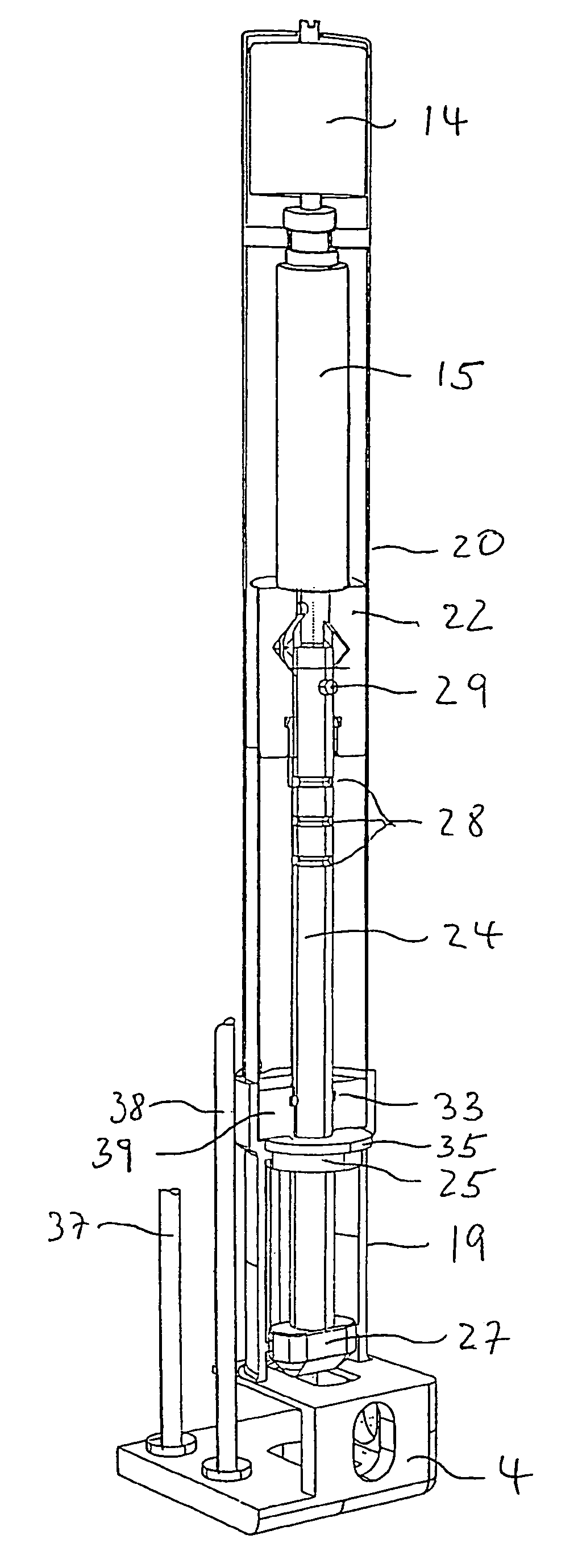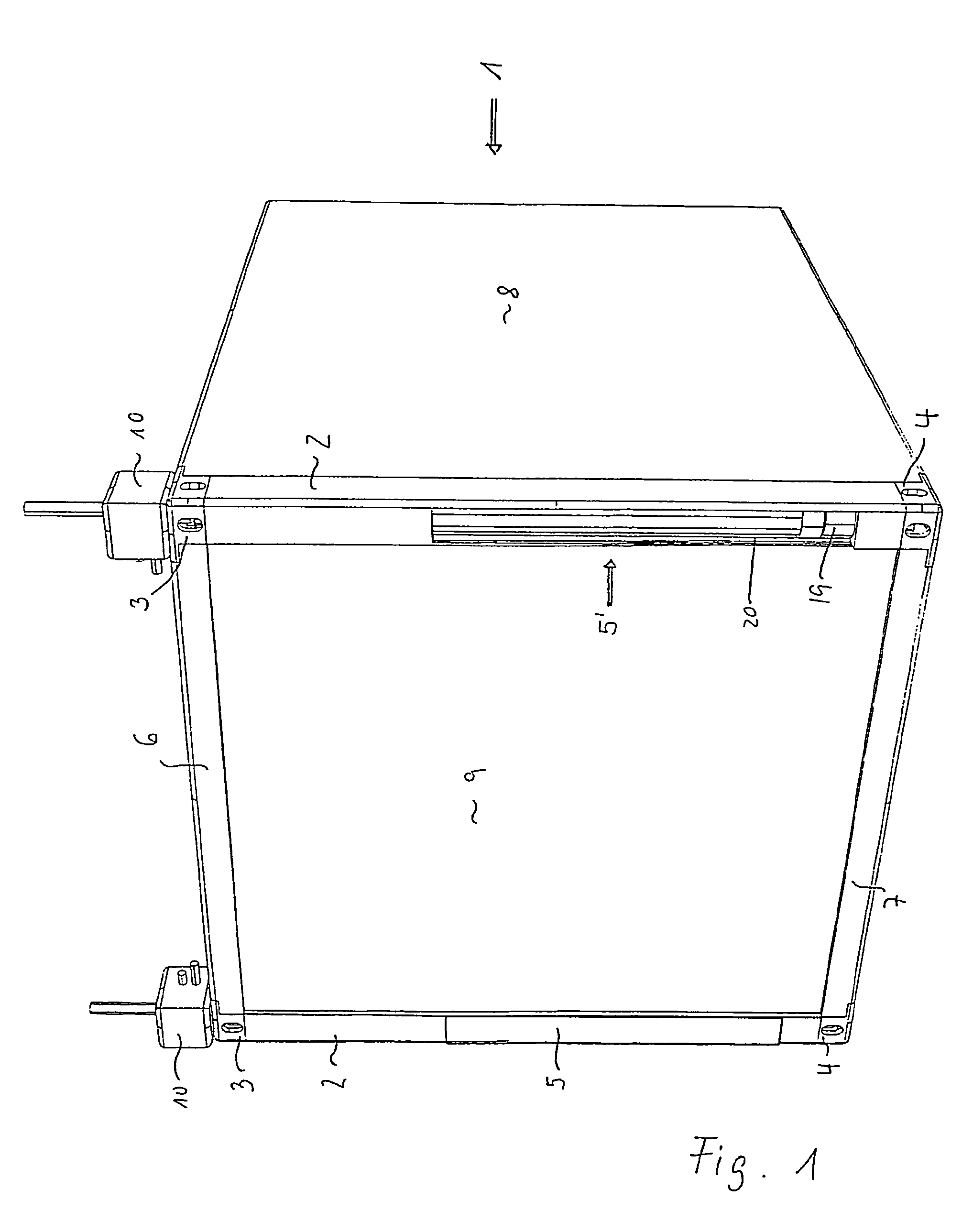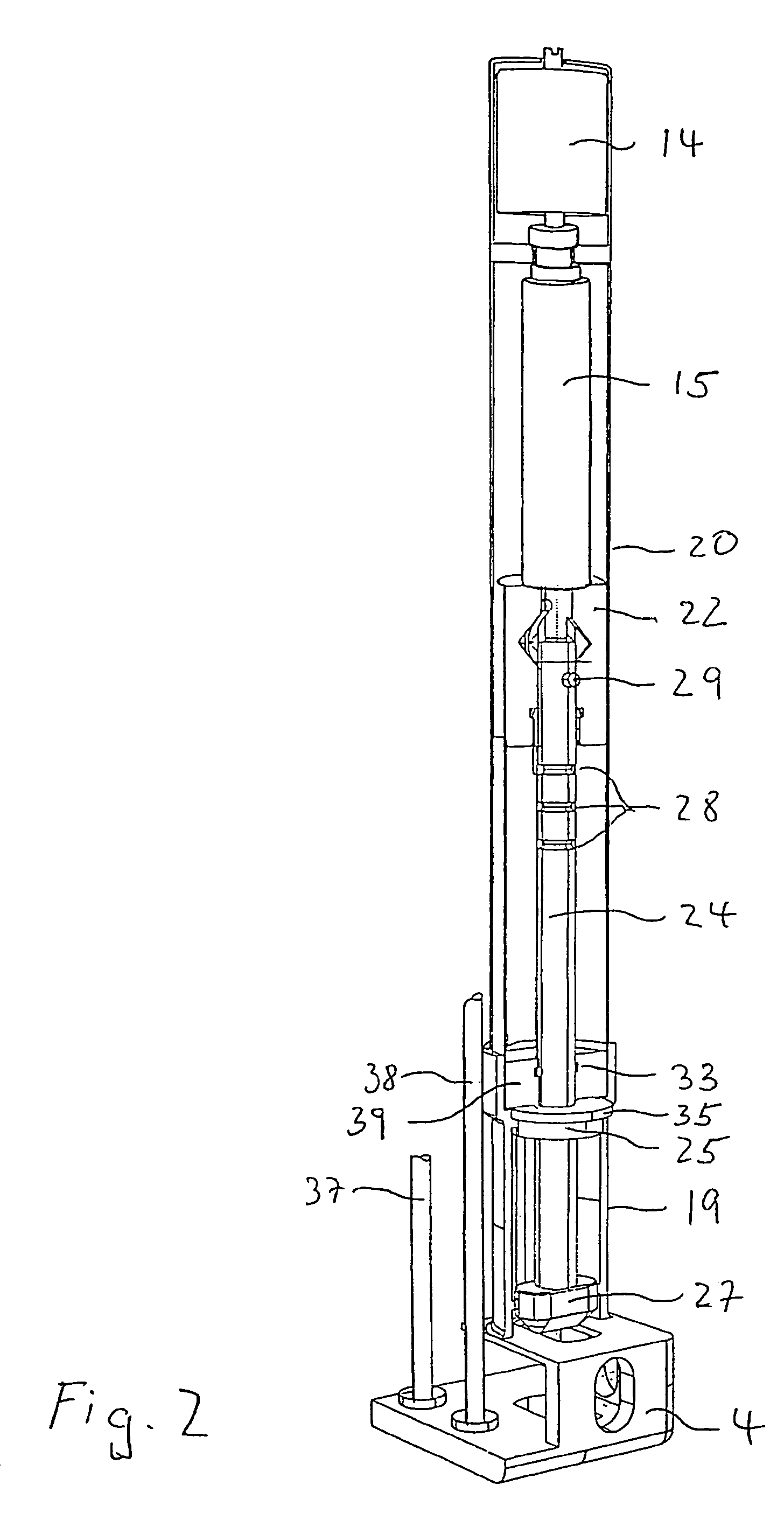Container comprising an electrically driven interlocking mechanism
a technology of interlocking mechanism and container, which is applied in the direction of latching fasteners, buckles, transportation and packaging, etc., can solve the problems of limited use and special problems of container spreaders, and achieve the effects of avoiding long repair times, ensuring the supply of electric current to the container, and minimizing the risk of injury to workers in the port or on the vessel
- Summary
- Abstract
- Description
- Claims
- Application Information
AI Technical Summary
Benefits of technology
Problems solved by technology
Method used
Image
Examples
Embodiment Construction
[0020]FIG. 1 represents a container (1) in a part view. It exhibits corners (2), on the upper end of which is located a locking housing (3), referred to hereinafter as a casting, and on the lower end of which a casting (4) is located. The container corners (2) are hollow on the inside and exhibit closure elements (5) at their lower area. This closure element is represented, for the purposes of the representation, as lying on the outside of the container corner. Expediently, the closure element is, however, located on the inside of the container and is guided over the corner, so that good accessibility is provided into the interior of the container corner. Thanks to this positioning, the interior of the container corner is protected against dirt and water. The closure element is bolted to the corner of the container by means of a water-tight and dust-tight seal, not represented here in any greater detail.
[0021]The upper castings are connected to one another by means of upper transver...
PUM
 Login to View More
Login to View More Abstract
Description
Claims
Application Information
 Login to View More
Login to View More - R&D
- Intellectual Property
- Life Sciences
- Materials
- Tech Scout
- Unparalleled Data Quality
- Higher Quality Content
- 60% Fewer Hallucinations
Browse by: Latest US Patents, China's latest patents, Technical Efficacy Thesaurus, Application Domain, Technology Topic, Popular Technical Reports.
© 2025 PatSnap. All rights reserved.Legal|Privacy policy|Modern Slavery Act Transparency Statement|Sitemap|About US| Contact US: help@patsnap.com



